Text
Addendum: I suck
I finished yesterday's Woodward Wednesday post in a hurry and made a couple of stupid errors I now need to correct here.
First of all, there is in fact not one but two illustrated pages of Silurian marine life that Alice B. Woodward made for Evolution in the Past, the other one being this one featuring at-least-sort-of fish (which I wrongly stated as only appearing in the Ordovician illustration)
There is actually much to be said of this page, so maybe it's best it be given its own post.

The vaguely sturgeonesque animals at the top are Lasanius, which has recently turned out to be a cyclostome, related to hagfishes and lampreys rather than "proper" fish. Hiding in the background are Lanarkia, and on the sea floor on the left looking oddly like a skate is Thelodus, both thelodont agnathans. In the foreground is Birkenia, an anaspid that isn't even as close to jawed fishes as the thelodonts.
There is also a Tremataspis swimming on the right, looking more like a generic osteotracan than this weird easter egg with a tail ought to (see Nobu Tamura's modern reconstruction below:)

H.R. Giger would tell you this is what a face hugger deposits down your throat, were he still alive.
There's another bulbous weirdo in the illustration: the bottom-dwelling betentacled onion-mimic that looks a bit like some kind of scotoplane. That is no sea cucumber, but a strange nautiloid called Gomphoceras. This thing is so obscure and odd I don't think even Joschua Knüppe has made a reconstruction of it yet. You hear that, Joschua? I'm calling you out!
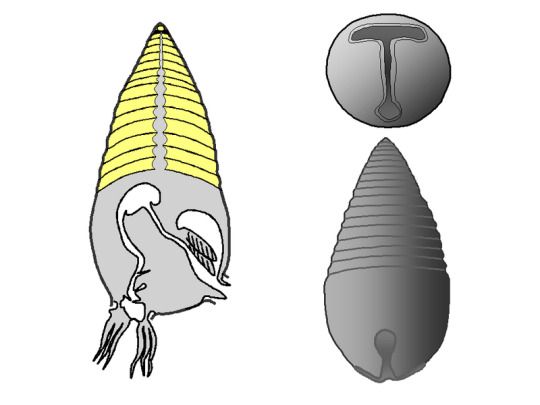
What if Nautilus, but a Mandalorian?
Finally there's that sort of vaguely horseshoe crab -like animal on the bottom, under Gomphoceras. What exactly is that? In the book it's listed as 'Hemiaspis', which is a genus of snake, so a clear case of a preoccupied name. The fossil appears to have been renamed Limuloides, and is now considered a planatergan, a sister group of horseshoe crabs that includes everything from spiders to sea scorpions.

They really aren't kidding when they say horseshoe crabs refuse to change, when their nearest relatives started out looking almost the same and are now spinning webs probably in the very room you are in right now.
#vintage paleoart#paleoartists#silurian#fish#nautiloid#horseshoe crab#jawless fish#errata#Woodward Wednesdays#Paleozoic
0 notes
Text
Wet Woodward Wednesday
Welcome one and all to Woodward Wednesdays, where we celebrate the works of Alice B. Woodward, possibly the earliest female paleoartist to restore a wide range taxa in works of undeniable artistic - not just scientific - merit. Today I'll walk you through Paleozoic underwater scenes she drew for Evolution in the Past (1912).
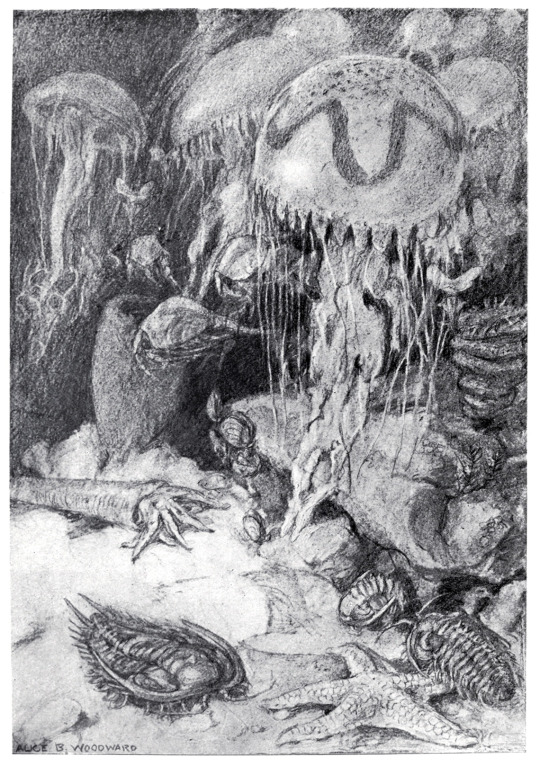
The first one depicts the Cambrian, and any modern lover of paleoart is probably going to ask what exactly is Cambrian about it? Where are the big stars of Burgess Shale from Anomalocaris to Hallucigenia to Pab the Snab a.k.a. Opabinia? They simply weren't known well enough: that big jelly may actually be the mouth of Peytoia, a radiodont related to Anomalocaris, which got misidentified as a jellyfish at one point:

It's unfortunate we didn't get to see any lobopods from Woodward. At least there are many other periods to cover like Ordovician:
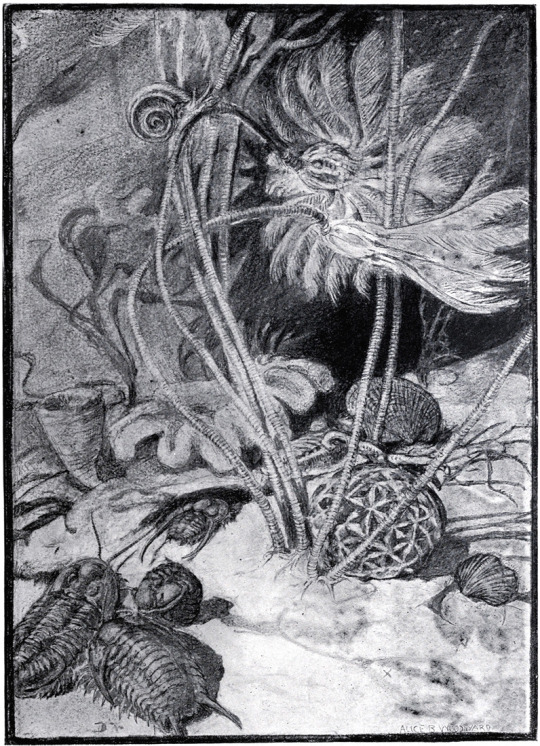
It's hard to avoid wondering if people thought of Ordovician as the peaceful period of life, or even the boring one, with the most exciting things being graceful crinoids swaying in the waves and trilobites scittering on the sea floor. No terrifying sea scorpions or eldritch Orthoceras to haunt your nightmares.

I'm jumping right past Silurian and into Devonian, because that scene was already covered in an earlier Woodward Wednesday. Fish predictably make their first appearance (as earlier vertebrates had barely been discovered yet) in the form of placoderms and ostracoderms. There's even an ammonoid crawling on the sea floor next to Drepanaspis looking curiously like a Devonian roomba. Then again, that probably describes the feeding ecology of Drepanaspis pretty well.

The Permian marine life scene feels almost daring now, a century later. Just a bunch of regular fish and molluscs having a nice day in the sea, no rake toothed reptilians or rotary saw sharkoids or even the humble Hybodus to be seen. The temptation to make the illustrations more thrilling was surely a thing back then as much as it is now, but our standards have shifted. Aquariums were still a relatively new thing and hadn't quite made their big break into households, so these lifelike undersea scenes may have been far more exciting for an early 20th century reader.
Curiously, Evolution in the Past does not include any Carboniferous scenes illustrated by Alice Woodward. Why this is, I cannot tell. If you know of other sources of Carboniferous life depicted by her in some sources, please let me know.
#vintage paleoart#paleoart#Woodward Wednesdays#Alice B Woodward#fish#trilobites#paleozoic#Cambrian#Ordovician#Devonian#Permian#fossils
6 notes
·
View notes
Text
Ok, I clearly have a problem of not knowing what weekday it is, ever. I need to learn how to schedule posts for the future if I want to stop missing every single Woodward Wednesday. This is getting embarrassing.
Have some Alice B. Woodward Diplodocuses (Diplodoci?) as a consolation for now, on this... uh, Woodward Friday.

Is it just me or do they have duck heads? This has to be the only time I've seen diplodocids with that particular nostril configuration. A misidentification of the antorbital fenestra (skull opening in front of the orbit, as seen in the photo below) perhaps?
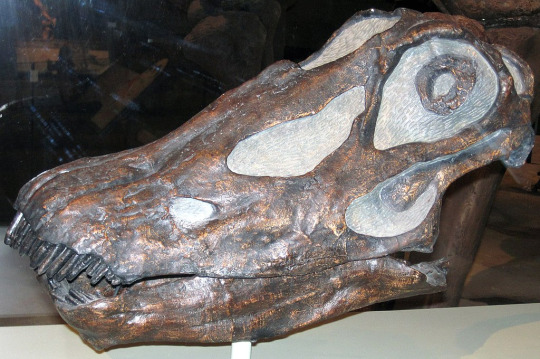
#Woodward Friday#Woodward Wednesdays#Diplodocus#vintage paleoart#dinosaurs#I suck#what even are days?#cranial anatomy
15 notes
·
View notes
Text
I made a new self-explanatory meme template. If you've not seen Prehistoric Planet... well, go watch Prehistoric Planet.

#Prehistoric Planet#memes#Tyrannosaurs#babies#swimming#drowning#I left out the Mosasaurus on purpose#coproliteposting#dinosaurs
8 notes
·
View notes
Text
I haven't abandoned this blog, I've just been so overwhelmed with other stuff that my anomalous brain can't keep up with every ball I stupidly launched up in the air. Trust me, I wouldn't miss Woodward Wednesdays or Transgender day of visibility on purpose.
Since it's still technically Easter, have my favorite part of the Easter story, when Jesus accidentally respawned in the Late Triassic and had to wait around 230 million years in hiding before appearing to the apostles. (Supposedly the original image is from the Creation Museum, but I that may not be true).

#coproliteposting#vintage paleoart#jesus#white jesus specifically#not palestinian jesus#easter#dinosaurs#pseudodinosaurs#aetosaur#triassic
1 note
·
View note
Text

One more old comic edit because yesterday I couldn't find the folder I had saved it. I wish comic books still had speech bubbles on the covers. There's so much more to work on.
#coproliteposting#vintage comics#comic edit#comic covers#dinosaur#Brontosaurus#gertie#House of Mystery#Dinosaur Island#1950s#gratuitous exposition makes every cover better
2 notes
·
View notes
Text
I've been too busy to post much this week. Have some old vintage comic/cover edits I've done:
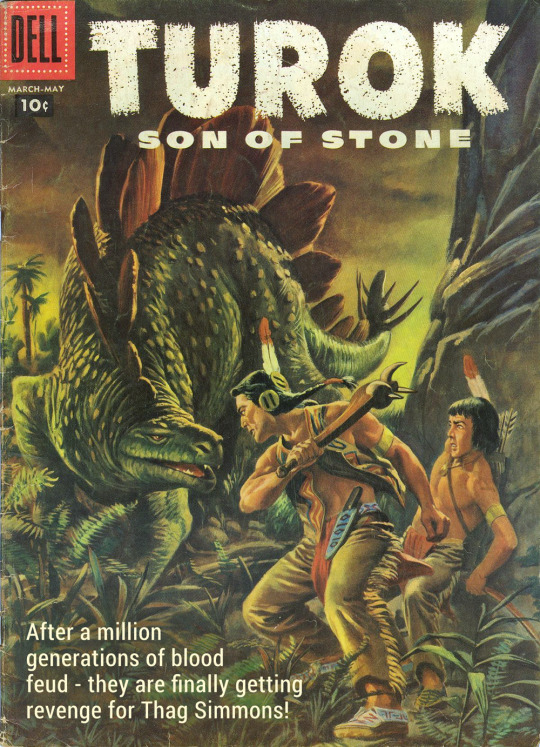
Context: Thagomizer

(As far as I can tell, "honker" is what theropods were called in Turok Son of Stone. Which is appropriate.)
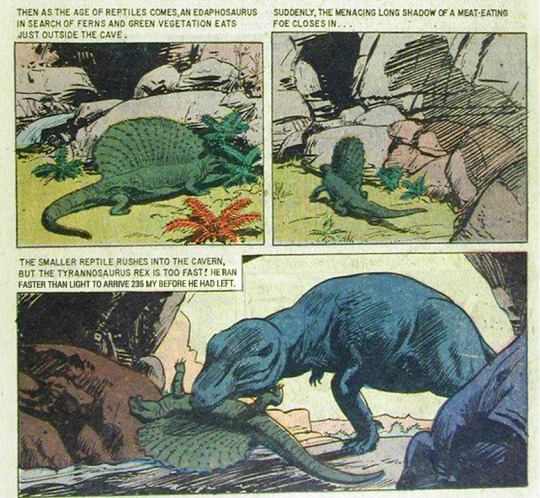
In classical physics if anything could break the light speed barrier, it would travel backwards in time (see: tachyons) which is why it's great Tyrannosaurus wasn't that fast.

#vintage comics#vintage cover#Turok#Turok Son of Stone#FTL#Edaphosaurus#Tyrannosaurus#Thagomizer#Thag Simmons#Stegosaurus#comic edit#mammoth#cave men#gaming#neanderthals#coproliteposting#paleomemes#canadian geese#tasty anachronism stew nom nom nom
1 note
·
View note
Text
Announcing Woodward Wednesdays

I have for a while wanted to post paleoart by the regrettably underappreciated early paleoartist, illustrator and a pioneer of females in paleoart, Alice B. Woodward. I originally planned a big post for International Women's Day, but my inability to keep on schedule scuttled those plans.
To make up for that mistake, I'm announcing a recurring weekly theme: Woodward Wednesdays! I'll be sharing some select works by Alice Woodward that I've been trying to clean up and retouch from old scans of books, so they won't be quite on par with scanned or photographed originals, which if exist are behind paywalls. Hopefully they'll be some of the best freely available versions of her works anyway.
As a taster of things to come, I want to kick things off with three rarely reproduced images from Evolution in the Past by Henry R. Knipe, from 1912.

This untitled illustration faces the title page, and is more symbolic than realistic, but showcases Woodward's talent more generally as an illustrator.

Titled "Silurian Marine Life" this piece almost feels like a still life, and simultaneously could be a neat little museum diorama. Also that orthocone is strangely adorable.

While it's Woodward's work on dinosaurs that most usually gets remembered in our time, she also illustrated both Paleozoic and Cenozoic life, perhaps more than Mesozoic taxa. This piece features Inostrancevia hunting pareiasaurs from the water, a highly dynamic scene the like of which I do not believe I've seen in paleoart either from this era or after.
48 notes
·
View notes
Text
I haven't managed to post much lately, so have a picture of the stripes of my black tabby kitten.

In case you didn't know, back cats are often tabbies, because the tabby pattern and the back color are controlled by separate genes. In the right light you can even see the difference on the back fur because the stripes have a different glossiness.
2 notes
·
View notes
Text

Since the first big Spinosaurus paper of the year is out this week, now's an appropriate time to post this.
#coproliteposting#vintage paleoart#spinosaurus#Iguanodon#stab#talk dumb get the thumb#no mercy from old iguanodons
10 notes
·
View notes
Text

Caturday post: The sleeper has not yet awoken.
I originally named Pauli after a Finnish musician, but watching Dune on Blu-Ray in preparation for Dune II with Pauli sleeping on the bed next to the TV I for the first time made the connection with the protagonist Paul Atreides. I loved the 2021 movie and the novels (though I read them literally decades ago) but somehow never made that connection. My weird brain is weird.
Anyway, I've now started calling him muad'dib, because he is a little mouse compared to my older kitties, and is also teaching my older boy to not be afraid of new things.
2 notes
·
View notes
Text

In case you thought I was done on the subject of snake-sea turtle hybrid plesiosaurs... well, I wasn't. I still aren't.
7 notes
·
View notes
Text

You may think all of the things I post here are ancient, but this time we're talking the actual literal Paleolithic. Those scribbly figures are based on actual rock carvings done by Magdalenian people during the late Pleistocene.


These reproductions of the original works (which I haven't seen photos of unfortunately) come from Chisena & Delage (2019) On the Attribution of Palaeolithic Artworks: The Case of La Marche (Lussac-les-Châteaux, Vienne). If you've ever wanted to know how Magdalenian people saw each other, or what your favorite paleojak is, that's a good place to start.
7 notes
·
View notes
Text
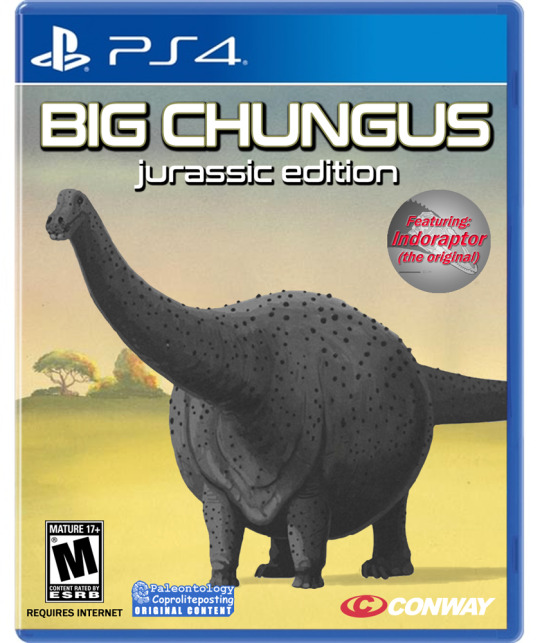
Remember Big Chungus? The Bugs Bunny adjacent meme that existed for a hot minute during the early Oligocene? Paleontology Coproliteposting remembers.



Okay, the last one wasn't from Paleontology Coproliteposting, but it's still a dinosaur so I'd argue it counts.
#ye olde meme#coproliteposting#paleomemery#memes#big chungus#dinosaurs#nuralagus#john conway#seriema#I wish I could remember who painted that tyrannosaurus but I'm drawing a blank
7 notes
·
View notes
Text
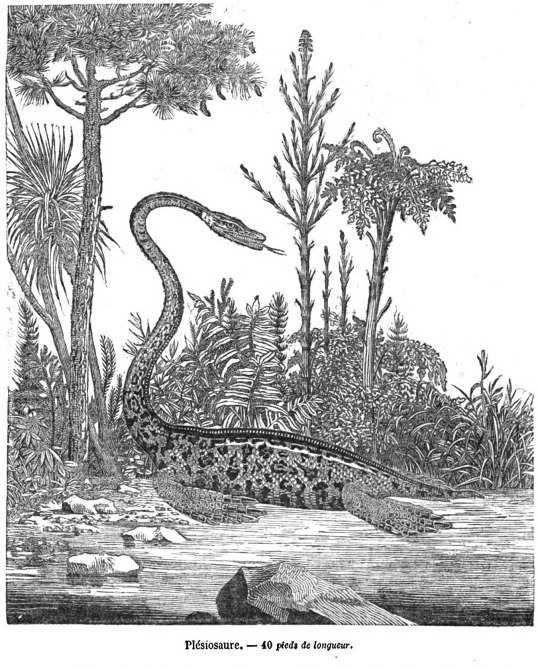
Once upon a time the plesiosaurs of France were snake-tongued anaconda-skinned tree-hugging land-lubbers (kind of). We have one by Théodore Susemihl (above) and other that seems to be attributed to Pierre Boitard (below). Both were illustrations for the science fiction of Boitard, a botanist and a geologist. However Susemihl created the first image for a shorter article in 1836, while the second appears in a posthumous novelized version of Boitard's story published in 1851.
If you are fluent in French you can enjoy the original article Paris avant les hommes in the Google Books edition of Musée des Familles, starting from page 257: https://www.google.com/books/edition/Mus%C3%A9e_des_familles/nKc_AAAAcAAJ?hl=en&gbpv=1
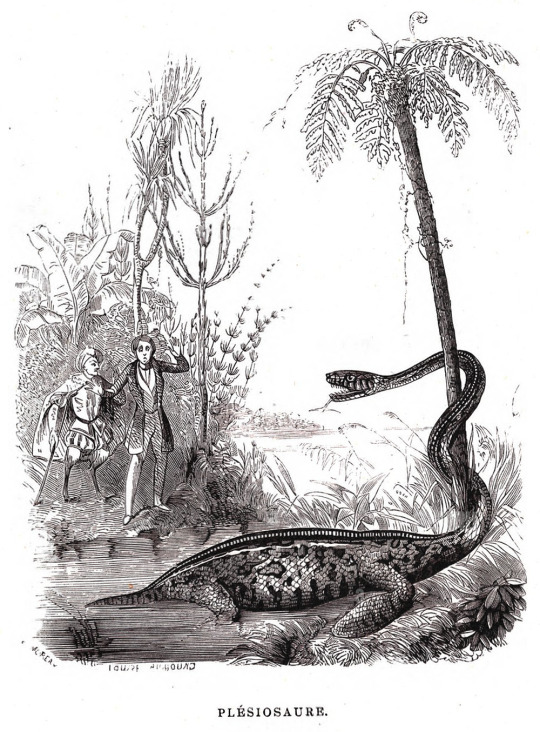
From there the Susemihl/Boitard plesiosaur seems to have spread to Austria, into the painting Vorweltliche Landschaft by Leander Russ (1842), and survived long enough to appear on the cover of Le Pélerin in 1922. A respectable run in the pre-Internet times. If you manage to find more of these amphibious spotted plesiosaurs somewhere, please let me know. They may yet have a future...

#vintage paleoart#paleoart memes#paleoart#19th century#illustration#plesiosaurus#Theodore Susemihl#Pierre Boitard#Leander Russ
8 notes
·
View notes
Text

I'm just gonna leave this here
An international team of Earth scientists, evolutionary biologists and paleontologists has unearthed an ancient frog with a belly full of eggs, the oldest known find of its kind. In their paper published in Proceedings of the Royal Society B, the group describes the frog, where it was found, how long ago it lived and where it fits in the frog family tree.
Prior research has shown that female frogs produce eggs in their bellies, and once mature, the eggs are laid and then fertilized by a male. In this new study, the research team uncovered a fossilized frog in the Zhonggou Formation of the Hanxia outcrop. Testing showed it to be from the Lower or Early Cretaceous, suggesting the frog lived approximately 100 million years ago, during the time of the dinosaurs.
Continue Reading.
328 notes
·
View notes
Text


25 years of palaeo-reconstruction...
For today, here are some drawings from the 1990's, when I was at school and at university. Pen drawings on slide 1, pencil on slide two.
255 notes
·
View notes